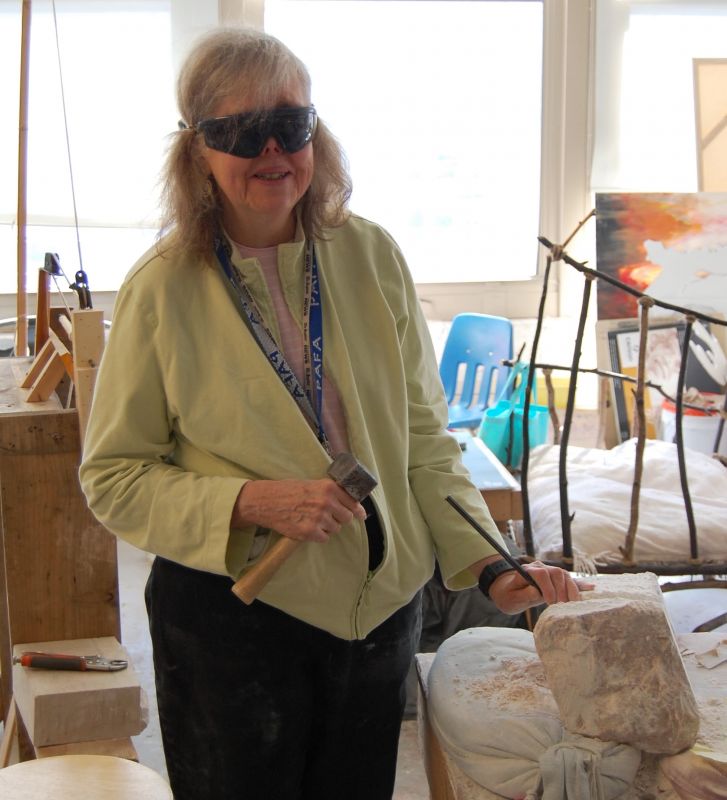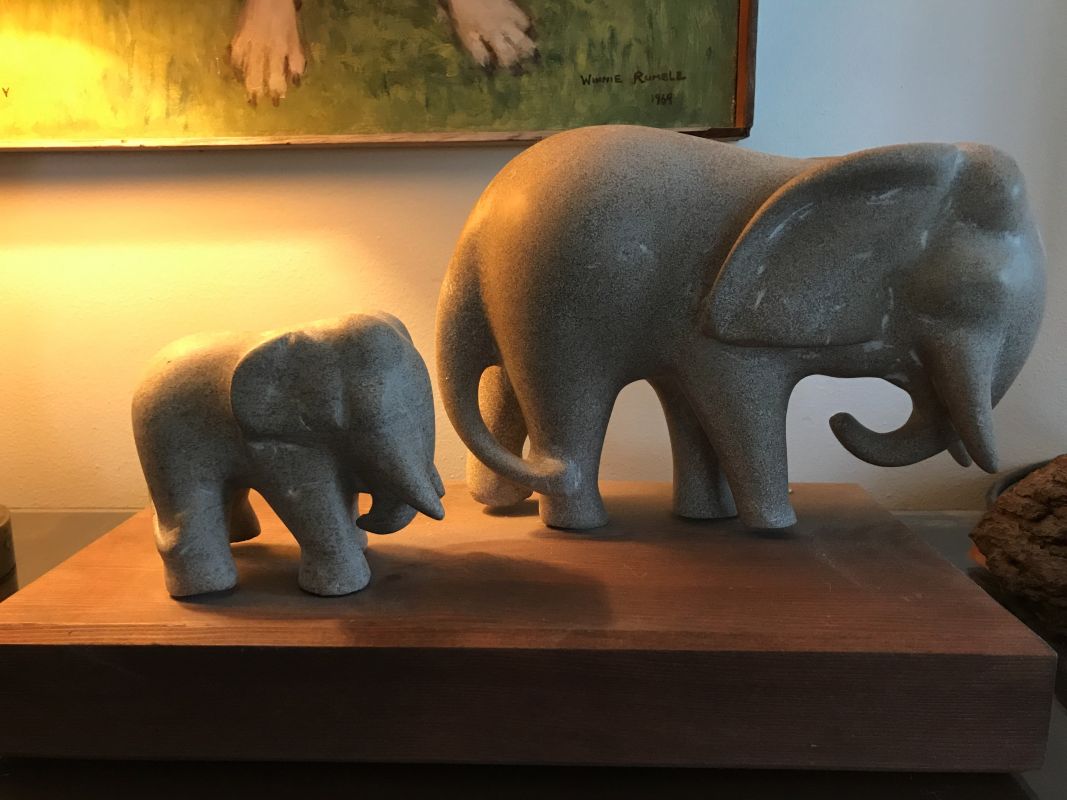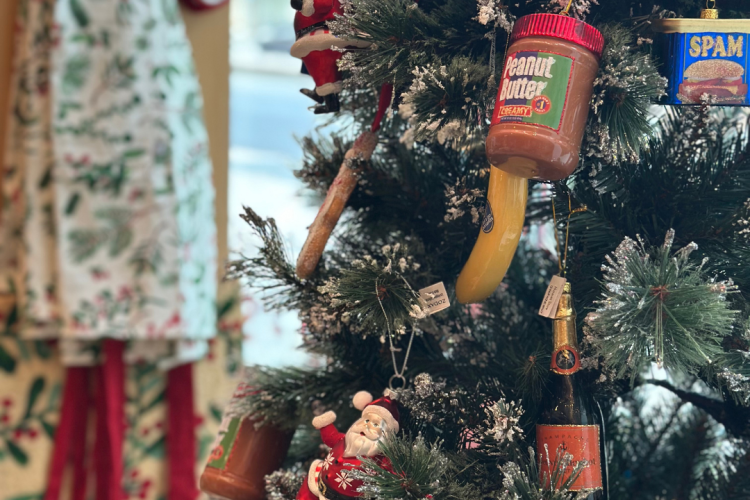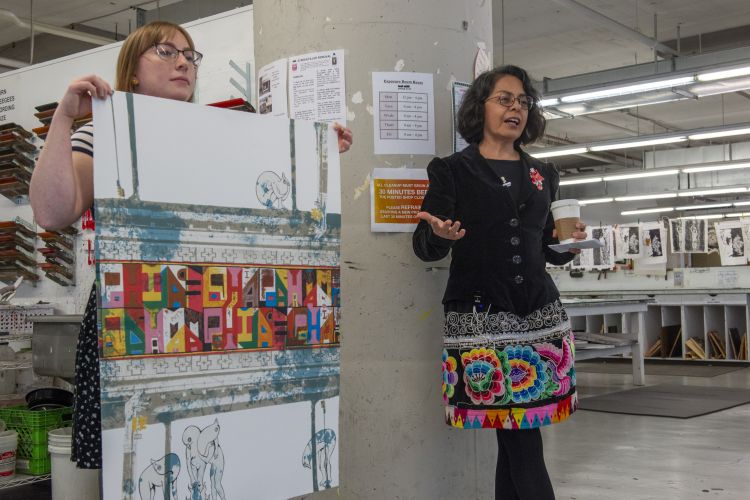STORIES FROM PAFA
Disability Can’t Slow Down Sculpture Student Kathy Faul
Sometimes a really good idea needs to hit you right in the face to make an impact.
The idea to become an artist literally smacked Kathy Faul in the head.
“One afternoon, as I stepped off the bus, I cracked my forehead on a pole which was in front of the door. Seeing stars, I staggered down the street, wondering what to do with my life, and I heard a voice in my head, ‘You are to be an artist’,” Faul said. “I spoke back to the voice, silently saying in a disbelieving voice, ‘How in the world can I be an artist?’ The voice spoke back, ‘I will teach you’.”
Soon after, Faul, who is blind, enrolled in classes at the Philadelphia Museum of Art with artist and PAFA alumna Eiko Fan.
“We made all kinds of crazy sculptures from found items, and painted pictures using different forms of manual expressions,” she said.
The art classes for visually impaired students proved to be transformative.
“The interaction between me and my fellow blind students was extremely positive,” she said. “Working in a group stimulates the creative force and bolsters one’s ability to see what amazing art the blind can produce.”
Blinded in a car accident at the age of 21, Faul hasn’t let the disability slow her down. After the accident; she learned Braille, got a service dog, became a computer programmer, and eventually married and raised a family. So it was no surprise when Faul built up her art skills and started taking classes with sighted students.
After studying at the Philadelphia Museum of Art and Wallingford Art Center, Faul signed up for a Continuing Education sculpture class at PAFA. She initially applied for a scholarship given by PAFA’s Women’s Board but was turned down the first time she filled out the application.
“Looking back on it, the application asked: What is your special need? I am so independent, that I said on the first application, that I didn’t have any special needs, not knowing that it was the politically correct way to ask what your disability was,” she said.
She eventually got the scholarship and began studying with Jim Lloyd and learning terracotta sculpture. On the first day of class, Lloyd told his students he’d be teaching everyone how to see. Faul, with her service dog by her side, was confused by Lloyd’s declaration but realized she sees in her own way.
“He told us about brain, and how it fatigues itself after minutes of looking at the same subject too long. That it’s important to take breaks so that the brain can refresh itself,” she said. “I of course, do all my looking with my fingers. And it’s true, after touching, the pathway between my fingers and brain wears down. It is important to walk away, and relax the mind and body, and then go back to work.”
Faul then moved on to stone sculpture and has been studying with Steve Nocella for several years. She said the first time Nocella showed her how to hold the hammer and chisel she knew she was on her way to love affair with stone.
“The first day upon entering the stone sculpture room, I felt as if I walked through a time machine back into the Middle Ages,” she said. “The sound of hammers and chisels tinkled in rhythm in my new classroom.”
For her first stone, Faul knew she wanted to carve an elephant. She bought a wooden elephant at a flea market and under Nocella’s guidance learned to find the angles and dimensions in her in stone.
“I feel my wooden model, then feel my stone, hold one finger on the spot to be broken away, place my chisel on that point, and give a gentle tap with the hammer,” she said. “I use my hearing to give me a notification of hitting a vein in the rock. A change of pitch from normal gives the warning to be softer and more gentle.”
As hard as stone is, Faul said it needs to be handled gently. She says each sculpture can take up to two years to complete.
“Stone sculpture is a way to inner peace. Each contact with the chisel, and a small piece of stone, about the size of a grain of rice falls away. Weeks go by, one chip after another falls away, until, voila! The piece of sculpture that you have been looking for is there, inside a ragged façade of stone. All that is left is to file, then sand, and an incredible gift from the earth, rock to art is at your fingertips.”
Her patience and hard work has paid off. Her work has been recognized with an Honorable Mention in the Continuing Education Programs Annual Student Exhibition. She won for her two elephant sculptures titled Mother and Child. The inspiration for the pair came as Faul was grieving for her service dog, Trixie.
“A friend in my class gave me two limestones. She would ask if I made anything yet. But, after Trixie’s death all I could do was to retreat to the solace of stone,” Faul said. “I started making the large stone into a headstone for her ashes in the garden but I eventually saw an elephant appear from my daily work. The mother elephant needed her daughter, so that is what was made from my second limestone.”
For her next stone, Faul is hoping to make an Egyptian cat for her daughter.
We're so excited you're planning to visit PAFA!
Make time for art — visit us Thursday to Sunday.
Before reserving your tickets, please review helpful information about museum hours, accessibility, building access, and special admission programs.
If you have any questions, feel free to reach out to us at visitorservices@pafa.org — we’d love to help!





